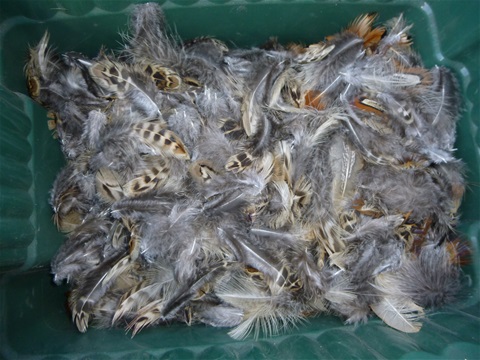Autumn is the best time to harvest compost made by cold composting techniques and is also a good time to apply compost as a mulch. Compost and manure were traditionally spread onto the plot and dug into the soil during November. However,
it is easier and more common to spread compost on the plot, or as a layer over raised beds, andleave it for the worms to carry the organic material down into the soil. Compost can also be applied both to established beds and around
specimen plants and fruit trees and bushes. Care must be taken not to cover the crowns of any perennials or take the compost right up to the trunks or stems of bushes or trees. It can also be used as mulch to top dress any grassed areas.
If harvesting
a plastic Dalek type bin, it is easier to lift the bin off the compost than to try to remove the compost through the hatch provided.
As with every other season autumn is considered by some as the best time to start composting. It is certainly a time
that, because of the tidying and cleaning up of the garden in readiness for winter, there should be plenty of material to compost and if undertaken early in the season the bin should have time get into its stride before the worst of the cold
weather.
Whether starting a new bin, or operating an existing one, getting it actively decomposing throughout the autumn, when the weather is kind, will help to provide a good crop of compost in the spring. If an open pile or New Zealand bin is being
used cover it, either with carpet, tarpaulin or a compost duvet, to prevent the material becoming water logged and aerate it to keep it working for as long as possible.
There is likely to be a considerable amount of compostable material available in
the autumn such as windfall fruit but much of it will be bulky such as pea or sweet pea vines. The volume can be reduced by shredding. Shredding increases the surface area of waste to the microbes in the compost. If a shredder is not available,
the waste can be spread on the lawn or a grass path and mowed using a rotary mower.
Even if the material added to the bin is not usually shredded during the rest of the year, it helps to do so with autumn waste to speed decomposition
of the material before the start of the cold weather. If shredding is not possible the material should be cut into small pieces i.e. one- or two-inch lengths.
If the compost heap starts overflowing either start a new bin or store the material
until the heap subsides and the waste can be added. The surplus material can be stored in a covered pile or buckets. It is important to keep the stored material dry, as dry material will heat up more quickly than wet. When added to the compost bin. Material
being saved in the autumn for use as bulking agent in food composting e.g. sawdust or composted wood chip should also be kept dry. (I keep mine in plastic dustbins)
It is helpful to turn the compost bin, to mix the new material and aerate
it, to encourage the composting processes before the onset of winter. Towards the end of the month it is advisable to check the consistency and moisture level of the contents. If the material is too dry more greens can be added e.g. nettles and annual
weeds along with water or the sludge from compost tea. If too wet crumpled cardboard shredded paper, woodchip or sawdust can be added.
Wormeries should be moved into a shed or outbuilding or if they are to be left outside during the winter the bin should
be insulated so that the contents and worms are not frozen, I have found that a triple layer of bubble wrap makes an excellent insulating material which does not absorb water, is clean and easy to reuse. The worms will still need feeding during
the winter, although at a reduced rate, so a removable bubble wrap lid should be included. If the allotment is to be left to over winter it might be advisable to take the wormery home so that it is not neglected over the coming months. On the other
hand, checking the wormery weekly is a good way of keeping an eye on the plot over the winter months.
Bag autumn leaves for leafmould or as a carbon-rich winter source of Browns for the compost bin on the allotment where cardboard or shredded paper
will not be readily available. In the UK the usual advice is that autumn leaves should be treated separately to make leafmould rather than being added to the compost as they can be slow to decompose but in America they are often one of the main composting
ingredients and a key source of Browns during the winter if stored dry in a suitable container. The autumn leaves can also be used immediately in the compost bin layering them with grass clippings, the autumn plant material but remember that the
leaves tend to be slow to decompose, so this may not be the method of choice.
More information is given at www.carryoncomposting.com
